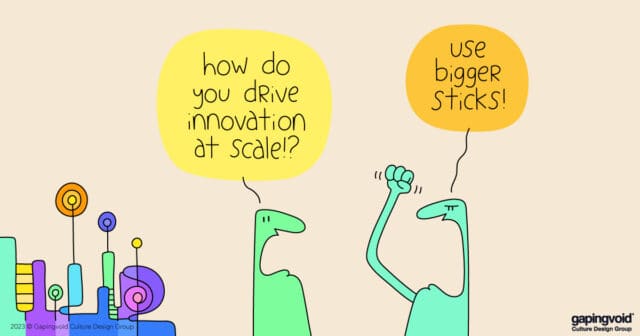
Well done to Sig, for writing The Thingamy Manifesto, which is all to do with a new generation of enterprise software he’s working on i.e. Thingamy. He also includes a ton of links, pointing to where these ideas are discussed in greater detail.
The manifesto has eleven points. Here’s a taster:
1. The Organisational Hierarchy is kaput – as single purpose executor of the Business Model it requires reorganisation every time you need to get better, an utterly futile exercise most of the time. Replace it.
2. Managing is a waste of time. Leadership I need, getting out of bed in the morning I can do myself.
3. Legacy software models the “way we always did things” – usually a model from the days of paper, quills and desks. Model reality instead.
4. Tree-structures are faulty. “Where it resides” is only two dimensional and suitable only for places. Use tags and any other means to enhance the knowledge and make finding easier.
Thanks, Sig!
[Disclosure: I have a small stake in Thingamy.]
[Manifesto submission guidelines are here.] [Manifesto archive is here.]



